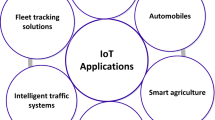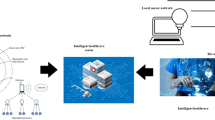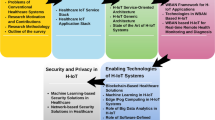Abstract
For the Social Internet of Things (SIoT), the interaction among ever increasing number of smart devices results in an exponential increase of services, which leads to an extreme difficulty for users to find suitable services. To address this issue, most existing recommendation algorithms are based on the data stored on the centralized server and distributed schemes are ignored. Meanwhile, distributed recommendation algorithms face the problems of privacy leakage and efficiency, which decrease the quality of experience (QoE). Therefore, we propose a novel SIoT service recommendation scheme called SIoT- SR, which adopts LSH Forest while combining with collaborative filtering algorithm to predict the Quality of Service (QoS) data of users. The LSH forest implements binary search by sorting and also has the ability to self-correct parameters. It can achieve a good tradeoff among memory, accuracy, efficiency, and privacy. Finally, we validate the effectiveness of the scheme based on the dataset WS-DREAM. The experimental results show that SIoT-SR has high prediction accuracy and efficiency while saving computing resources and are suitable for service recommendation of SIoT with resource-constrained devices.










Similar content being viewed by others
References
Kortuem G, Kawsar F, Fitton D, Sundramoorthy V (2009) Smart objects as building blocks for the internet of things. IEEE Internet Comput 14(1):44–51
Al-Fuqaha A, Guizani M, Mohammadi M, Aledhari M, Ayyash M (2015) Internet of things: a survey on enabling technologies, protocols and applications. IEEE Commun Surv Tutor 17(4):2347–2376
Tan L, Wang N (2010) Future internet: the internet of things. In: International conference on advanced computer theory and engineering, pp 376–380
Rho S, Chen Y (2018) Social Internet of Things: applications, architectures and protocols. Futur Gener Comput Syst 82:667–668
Mashal I, Chung TY, Alsaryrah O (2015) Toward service recommendation in Internet of Things. In: Seventh international conference on ubiquitous and future networks, pp 328–331
Mashal I, Alsaryrah O, Chung T-Y (2016) Testing and evaluating recommendation algorithms in internet of things. J Ambient Intell Humaniz Comput 7(6):889–900
Li Z, Chen R, Liu L, Min G (2016) Dynamic resource discovery based on preference and movement pattern similarity for large-scale social Internet of Things. IEEE Int Things J 3(4):581– 589
Wang P, Luo H, Sun Y (2017) IoT service recommendation strategy based on attribute relevance. In: International conference on ubiquitous computing and ambient intelligence, pp 34–43
Qi L, Xiang H, Dou W, Yang C, Qin Y, Zhang X, Qi L, Xiang H, Dou W, Yang C (2017) Privacy-preserving distributed service recommendation based on locality-sensitive hashing. In: IEEE International conference on web services, pp 49–56
Ni L, Yuan Y, Wang X, Yu J, Zhang J (2018) A privacy preserving algorithm based on R-constrained dummy trajectory in mobile social network. Procedia Comput Sci 129:420–425
Zhang J, Yuan Y, Wang X, Ni L, Yu J, Zhang M (2018) RPAR: location privacy preserving via repartitioning anonymous region in mobile social network. Secur Commun Netw 2018:6829 326: 1–6829 326:10. [Online]. Available: https://doi.org/10.1155/2018/6829326
Zheng X, Cai Z, Yu J, Wang C, Li Y (2017) Follow but no track: privacy preserved profile publishing in cyber-physical social systems. IEEE Internet Things J 4(6):1868–1878
He Z, Cai Z, Yu J (2018) Latent-data privacy preserving with customized data utility for social network data. IEEE Trans Veh Technol 67(1):665–673
Atzori L, Iera A, Morabito G, Nitti M (2012) The social internet of things (siot) - when social networks meet the internet of things: concept, architecture and network characterization. Comput Netw 56(16):3594–3608
Perera C, Zaslavsky A, Christen P, Georgakopoulos D (2014) Context aware computing for the internet of things: a survey. IEEE Commun Surv Tutor 16(1):414–454
Saleem Y, Crespi N, Rehmani MH, Copeland R, Hussein D, Bertin E Exploitation of social IoT for recommendation services. In: 2016 IEEE 3rd World forum on internet of things (WF-IoT), pp 359–364
Hussein D, Soochang P, Crespi N (2015) A cognitive context-aware approach for adaptive services provisioning in social internet of things. In: IEEE International conference on consumer electronics, pp 192–193
Hussein D, Han SN, Lee GM, Crespi N, Bertin E (2017) Towards a dynamic discovery of smart services in the social internet of things. Comput Electr Eng 58:429–443
Beltran V, Ortiz AM, Hussein D, Crespi N (2014) A semantic service creation platform for Social IoT. In: 2014 IEEE World forum on internet of things (WF-IoT), pp 283–286
Yao L (2011) A propagation model for integrating web of things and social networks. In: International conference on service-oriented computing, pp 233–238
Wu J, Dong M, Ota K, Li J, Guo L, Li G (2015) Chance discovery based security service selection for social P2P based sensor networks. In: IEEE Global communications conference, pp 1–6
Yao L, Sheng QZ, Ngu AHH, Li X (2016) Things of interest recommendation by leveraging heterogeneous relations in the internet of things. ACM Trans Internet Technol 16(2):1–25
Ko H, Kim T, Kim B, Lee D, Ko I, Hyun SJ (2014) Place-aware opportunistic service recommendation scheme in a smart space with internet of things. In: 2014 IEEE 11th consumer communications and networking conference (CCNC), pp 477–482
Organero MM, Ramłez-Gonzlez GA, Merino PJM, Kloos CD (2010) A collaborative recommender system based on space-time similarities. IEEE Pervasive Comput 9(3):81–87
Viterbo J, Endler M, Baptista G (2010) A two-tiered approach for decentralized reasoning in ambient intelligence. IEEE Intell Syst 25(5):54–60
Erickson JS, Rhodes M, Spence S, Banks D, Rutherford J, Simpson E, Belrose G, Perry R (2009) Content-centered collaboration spaces in the cloud. IEEE Internet Comput 13(5):34–42
Guinard D, Trifa V, Karnouskos S, Spiess P, Savio D (2010) Interacting with the soa-based internet of things: discovery, query, selection, and on-demand provisioning of web services. IEEE Trans Serv Comput 3(3):223–235
Chen X, Zheng Z, Lyu MR (2011) Qos-aware web service recommendation via collaborative filtering. IEEE Trans Serv Comput 4(2):140–152
Zheng Z, Zhang Y, Lyu MR (2014) Investigating QoS of real-world web services. IEEE Trans Serv Comput 7(1):32–39
Gionis A, Indyk P, Motwani R (1999) . Similarity search in high dimensions via hashing 8(2):518–529
Bawa M, Condie T, Ganesan P (2005) LSH forest: self-tuning indexes for similarity search. In: International conference on World Wide Web, pp 651–660
Xia Y, Zhou M, Luo X, Pang S, Zhu Q, Li J (2015) Stochastic modeling and performance analysis of migration-enabled and error-prone clouds. IEEE Trans Indus Inf 11(2):495–504
Zheng W, Zhou M, Wu L, Xia Y, Luo X, Pang S, Zhu Q, Wu Y (2017) Percentile performance estimation of unreliable IaaS clouds and their cost-optimal capacity decision. IEEE Access 5:2808–2818
Zhou Z, Wu QJ, Sun X (2018) Encoding multiple contextual clues for partial-duplicate image retrieval. Pattern Recogn Lett 109:18–26
Zheng Z, Ma H, Lyu MR, King I (2013) Collaborative web service qos prediction via neighborhood integrated matrix factorization. IEEE Trans Serv Comput 6(3):289–299
Yu D, Liu Y, Xu Y, Yin Y (2014) Personalized QoS prediction for web services using latent factor models. In: IEEE International conference on services computing, pp 107–114
Koren Y (2008) Factorization meets the neighborhood: a multifaceted collaborative filtering model. In: ACM SIGKDD International conference on knowledge discovery and data mining, pp 426–434
Zhang Y, Zheng Z, Lyu MR (2011) Exploring latent features for memory-based QoS prediction in cloud computing. In: IEEE International symposium on reliable distributed systems, pp 1–10
Funding
This work is supported by the NSF of China under Grant Nos. 61672321, 61832012, 61771289, and 61373027.
Author information
Authors and Affiliations
Corresponding author
Additional information
Publisher’s note
Springer Nature remains neutral with regard to jurisdictional claims in published maps and institutional affiliations.
Rights and permissions
About this article
Cite this article
Yan, B., Yu, J., Yang, M. et al. A novel distributed Social Internet of Things service recommendation scheme based on LSH forest. Pers Ubiquit Comput 25, 1013–1026 (2021). https://doi.org/10.1007/s00779-019-01283-4
Received:
Accepted:
Published:
Issue Date:
DOI: https://doi.org/10.1007/s00779-019-01283-4




